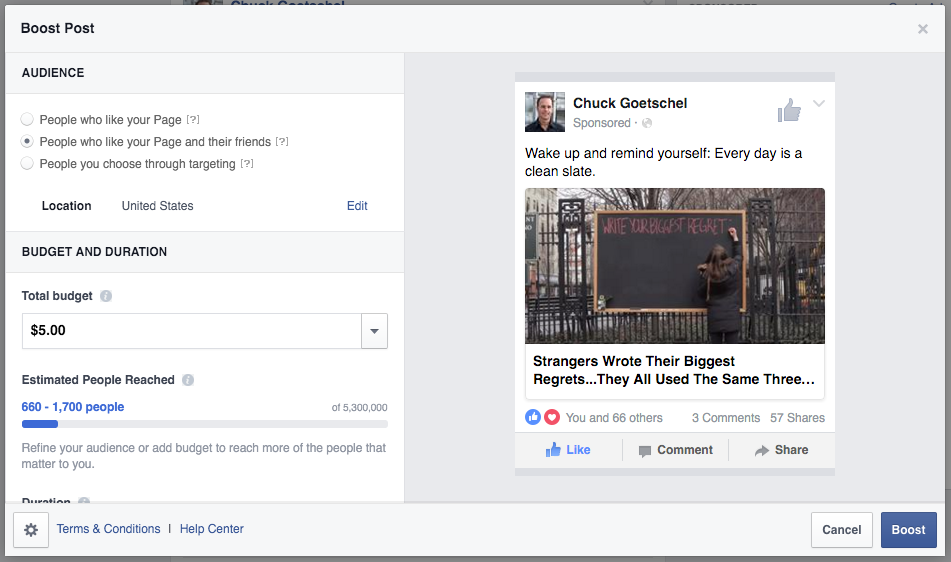New things frighten us. They’re weird and complicated, and they can loom overwhelmingly above us when we think about them. But we can get through our fear when we remember that things are always changing and we’ll always need to adapt to something new.
Especially social media.
While there are always skeptics of new media and technology, now is not the time to be one. People say the Internet makes us antisocial, but keep in mind, it isn’t the first type of technology to get such a bad rap.

Whether it’s the wheel, the mill, the radio or Snapchat, technology is a tool to be used. Online technology such as email or Twitter enhance your productivity or increase your reach.
And more often than not, your customers are using new media to connect with their friends, their family, popular influencers and even businesses. Meanwhile, businesses and brands often participate in these mediums, too. Whether they’re advertising in magazines, showing commercials on TV or promoting a hashtag on Twitter, companies use these popular ways of communicating information to showcase what they offer.
At the end of the day, you are still connecting with real people at the other end of these technologies, along with all of their emotions, fears, desires and concerns. Apply solid business principles and people skills online just as you currently do offline, and you’ll do just fine.
Which brings me to my main point: Your business goals should be consistent regardless of the medium. Don’t try to separate the value of one type of technology over another. Whether in print media, on a billboard, through a jingle on the radio or in a Facebook post, your offline and online goals should be in line.
[bctt tweet=”Your business goals should be consistent no matter what the medium”]
So what are a few of the goals you can have in the digital space? Here are a few with which you’re probably familiar:
- Brand Consistency
Whether visitors find your website, your Facebook page or your Instagram, they recognize you. You’ve made it clear with your imagery and your messaging that you are the same and you are trustworthy.
- Staying Top-of-Mind
Billboards, radio sponsors, direct mail, TV commercials, online advertisements, you name it: The goal is to remain at the top of their minds for a specific product or service.

- Lead Nurturing
Most people don’t make a purchase in their first interaction with you. They need time to get to know you so that, when they’re looking for a product or a service you offer, they are already sold on you. Putting them in a lead-nurturing funnel helps people make a quicker buy when they’re ready than if they were meeting you for the first time.
- Value Sharing
If shoppers are connected to you on a deeper core level than your actual product or service, they will go out of their way to shop with you. Sharing your core values with consumers helps to build trust and strengthen relationships between businesses and their customers.
In other words, people don’t just buy products that interest them. They buy from brands that connect with them on a deeper level than a transactional exchange. If Apple emphasizes how they value thinking differently and being cool, then anyone who shares those values is drawn to Apple products. Sharing your brand’s values allows customers to be drawn to you as well.
Did you know that there are more than 50 million refugees worldwide and over half of them are children? Through UNIQLO’s…
Posted by UNIQLO USA on Tuesday, April 5, 2016
- Reputation Management
People will talk about you whether you want them to or not. Do you want to be part of the conversation? Maintaining a positive reputation is key for building relationships with current and potential customers and transitioning into selling them your products or services.
- Social Validation
In the early days of the Internet, consumers would just check review websites. Today, more and more people are looking for other types of social validation before making a purchase. What do their friends say? How many years has the company been in business? How many products have they sold in their history? How many people follow them on Facebook? All of these questions need answers before a buyer is ready to commit to a purchase.

- Lead Generation and Sales
The bottom-line business goal comes down to profitability. To continue to meet your goals of building a prosperous business, you need to turn prospective customers into buyers, and then encourage those buyers to come back.
What marketing goals are most important for you to keep consistent offline and online? And how do you do it? Let me know in the comments below, and you may be featured in an upcoming blog post!


 Day 15: Thank your followers.
Day 15: Thank your followers.


 #4
#4


